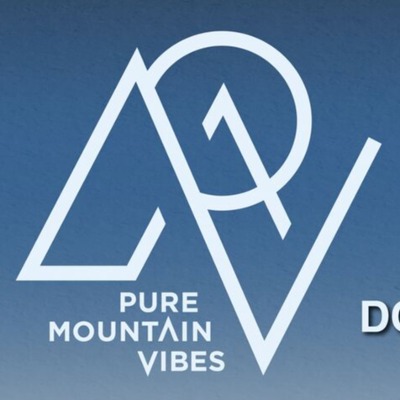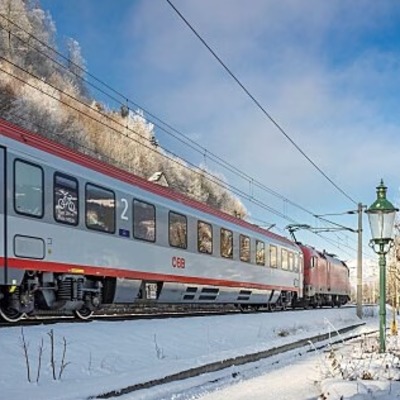University Of Basel Study - Skiing Over Christmas Holidays No Longer Guaranteed, Even With Snowmaking

For many in Switzerland, holidays in the snow are as much a part of the end of the year as Christmas trees and fireworks. However, global warming is increasingly making white slopes a rarity. Researchers from the University of Basel have calculated how well one of the largest ski areas in Switzerland will still be able to manage with artificial snow by the year 2100 and how much water will be needed for this.
The future for snow sports in Switzerland looks anything but rosy or white. Current climate models predict that there will be more precipitation in winter in the coming decades. More and more frequently, however, it does not fall as snow, but as rain from the sky. Nevertheless, an investor recently used several million Swiss francs to expand the Andermatt-Sedrun-Disentis ski area. A short-sighted decision that will take revenge?
A research team led by Dr. Erika Hiltbrunner from the Department of Environmental Sciences at the University of Basel has now calculated to what extent this ski area can maintain the Christmas business and a ski season of at least 100 days with technical snowmaking in the future. To do this, they collected data on the orientation of the slopes, the places that need snowmaking and how much water needs to be used. They also used the latest climate scenarios (CH2018) in combination with the SkiSim 2.0 simulation software to project the snow conditions with and without artificial snowmaking. Their results were recently published in the International Journal of Biometeorology.
No guarantee for a white Christmas
According to the result, artificial snow can guarantee a 100-day ski season, at least in the higher parts of the ski area (over 1800 meters above sea level). But for business during the Christmas holidays, it is likely to become scarce in the coming decades, as it often does not get cold enough beforehand. In a scenario with unchecked climate change, the Sedrun region in particular will no longer be able to guarantee snow over the holidays in the long term. To a certain extent, the situation could possibly be compensated for with new snow cannons, but only partially, the researchers write.
"What many people don't consider is that you also need certain weather conditions for technical snowmaking," explains Hiltbrunner. "It must not be too warm and the air must not be too humid, otherwise there will not be sufficient evaporation cooling for the atomized water to freeze in the air and come down as snow." Warm air absorbs more moisture and as the winters get warmer and warmer, it becomes increasingly difficult or even impossible to technically produce snow. To put it another way: “Here, the physics of technical snowmaking set natural limits.”
540 million liters
However, business can still be done, because artificial snowmaking enables the operators of the ski area to keep at least higher slopes open for 100 consecutive days - even until the end of the century and with unchecked climate change. But the price for this is quite high: the researchers' calculations show that the water consumption for artificial snow will increase significantly - by around 80 percent for the entire ski area. In an average winter towards the end of the century, consumption would therefore amount to around 540 million liters of water, compared to 300 million liters today.
However, the researchers emphasize that this increase in demand is still relatively moderate compared to other ski areas. Earlier studies had shown that, for example, the water consumption for snowmaking in the Scuol ski area will increase by a factor of 2.4 to 5 because the area covered with snow has to be greatly increased there in order to guarantee snow reliability.
Periods of 30 years are considered in the study. However, there are large annual fluctuations: In the snowless winter of 2017, water consumption for snowmaking in one of the three sub-areas of Andermatt-Sedrun-Disentis tripled.
Conflicts over water use
Today, part of the water for snowmaking in most of the Andermatt-Sedrun-Disentis area comes from Lake Oberalp. For this purpose, a maximum of 200 million liters may be withdrawn each year. If climate change continues unchecked, this will last until the middle of the century. After that, however, new water sources would have to be tapped. “Hydropower is also used to generate electricity at the Oberalpsee,” says Dr. Maria Vorkauf, first author of the study, who now works at the Agroscope research institute. "Here, conflicts between the water requirements for the ski area and those for electricity generation will probably arise."
For the time being, however, this ski area is likely to benefit from climate change: when smaller and lower-lying ski areas have to close, tourism concentrates on large and higher-lying areas, such as Andermatt-Sedrun-Disentis.
What is certain is that the increased snowmaking will drive up the costs and thus also the prices for ski holidays. "At some point, people with an average income will simply no longer be able to afford such vacations," says Erika Hiltbrunner.
original publication Maria Vorkauf, Robert Steiger, Bruno Abegg and Erika Hiltbrunner
Snowmaking in a warmer climate: an in-depth analysis of future water demands for the ski resort Andermatt-Sedrun-Disentis (Switzerland) in the twenty-first century.
International Journal of Biometeorology (2022), doi: 10.1007/s00484-022-02394-z













